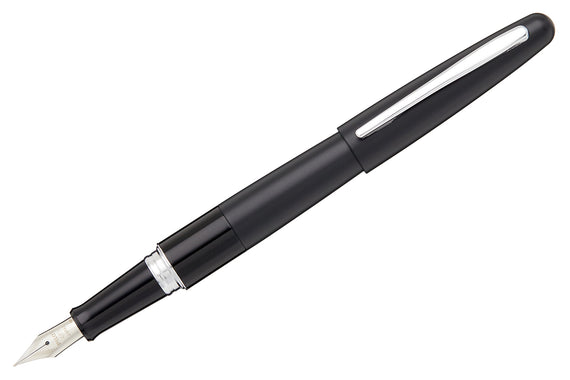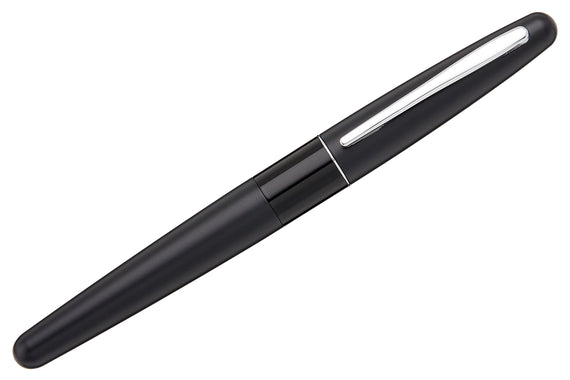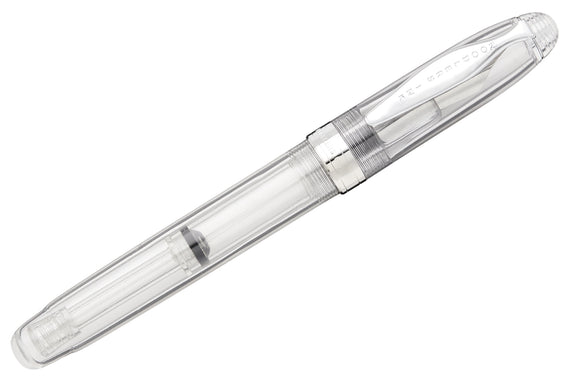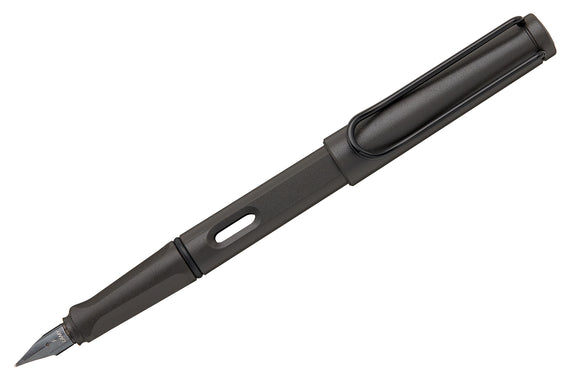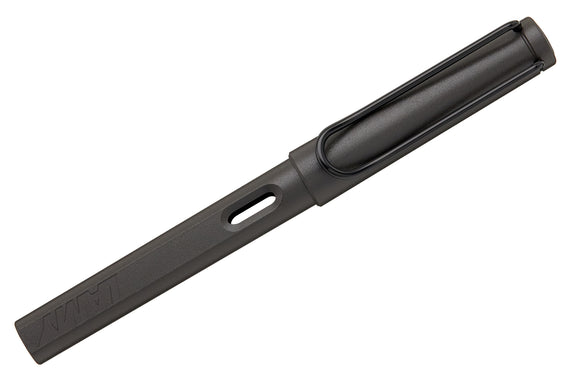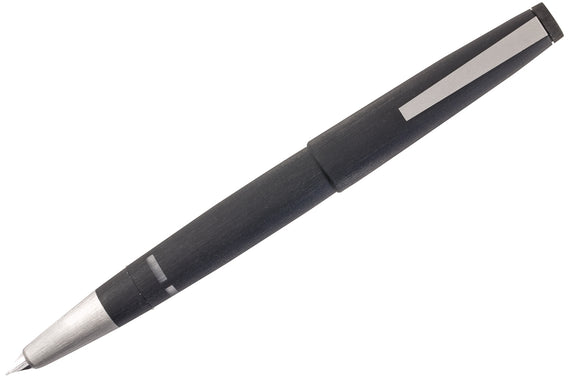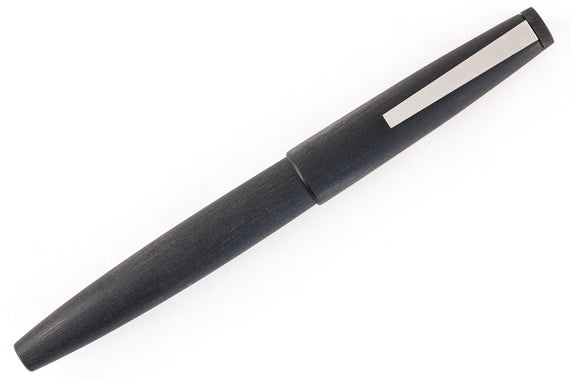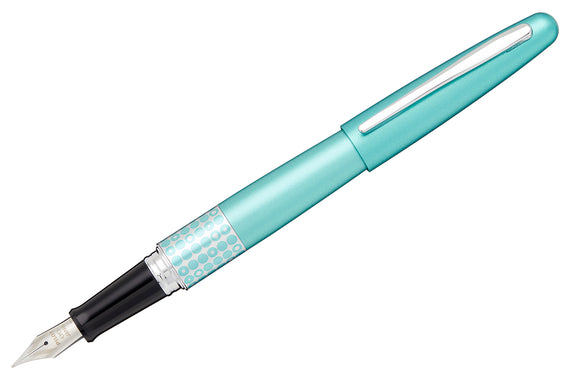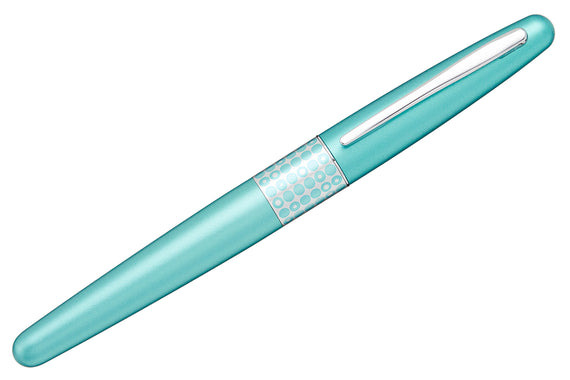What is a Fountain Pen?
Fountain Pen 101: Part One
If you’ve ever heard of a fountain pen, seen one used in a movie, or been given one by a relative or friend, you’ve probably felt a mix of intrigue, curiosity, and intimidation when it comes to how to use this somewhat mysterious writing instrument. I know how intimidating it can be because I was in that exact same place when I first discovered them in 2009, and since then it’s felt like I’ve walked through the wardrobe into Narnia, discovering a whole new world I never knew existed.
By the time you finish this video (or read this article), it’s my goal to help you understand what makes fountain pens different than other writing instruments, help you understand the basics of how to use them, and get you excited about how they can enhance your life in ways you probably don’t even realize yet!
My name is Brian Goulet and I’m the co-owner of thegouletpens.com. As a retailer of fountain pens, ink, and paper, I’ve spend the last 14+ years diving deeper into this world and introducing others to it, which is precisely why I wanted to make this video; to demystify what fountain pens are, how they work, and talk about the benefits of using them.
What is a fountain pen?
A fountain pen is a refillable pen that holds water-based ink in the pen body, allowing that ink to flow to the tip when you touch it to paper through the process of capillary action. While there are many designs and methods of filling and cleaning a pen, the underlying principle of how they all work is the same.
Fountain pens have been around for over 150 years, and they were revolutionary like the “smart phone” of their time, replacing feather quills and dip pens in the late 1800’s. They dominated the portable writing instruments of the early 1900’s until the convenience of the ballpoint pen displaced them in the 1950’s-60’s. The ballpoint pen and subsequently the rollerball pen were convenient and able to be mass produced, so they took over as the main writing tool for most people, though not without their tradeoffs.
About ballpoints and rollerballs:
Ballpoint and rollerball pens work in a somewhat similar way to each other, using a thicker paste or gel ink that’s housed inside a disposable cartridge. The friction of the ball rolling across the paper dispenses the ink inside the cartridge. This is certainly a convenient way to write, but it does come at a tradeoff of the writing feel.
We’re all familiar with the scribbling to get a ball pen started, not being able to check how much ink is left, and needing to bear down to get it to write. Very few of these pens are what anyone would consider “enjoyable” to write with, it’s often just a tool to get a job done with little thought given to it. You’re often limited in terms of line width and ink color choices; you basically get what you get.
These are all compromises made with the ball design and we’re all pretty used to it, though you probably don’t even realize just how much a fountain pen can open up the options for you. I personally thought a “gel rollerball” was the ultimate writing experience until I discovered fountain pens, and I can tell you, fountain pens are just in a whole other league altogether!
How fountain pens work
How a fountain pen works is rather fascinating and elegantly simple. You have a reservoir of ink that’s held inside the pen. This ink flows down through a small channel in a part inside the pen called the “feed”. It works off the principle of capillary action, much like how trees can draw water from the ground to reach its leaves and branches.
The feed delivers the ink to the metal nib, which delivers it to the paper when you touch the tip of that nib to it. The absorbency of the paper continues that process of capillary action, so when you’re not writing, the ink stays put, ready to go in the pen. When you’re writing, the paper draws the ink through the pen continuously, until the pen is empty and you refill it.
These are a lot of terms! You can check out our Anatomy of a Fountain Pen infographic here if you'd like to learn more.
Why use a fountain pen?
A typical fountain pen can write for dozens if not hundreds of pages before needing to be refilled, and the typical bottle of ink can last a year or more so it can be quite an economical and environmentally friendly way to write.
Because of how easily fountain pen ink flows, you don’t have to press down, the ink flows with just the weight of the pen itself. This is less work for the muscles in your hand and wrist, which means you won’t get so tired and you can write longer, with more control and more pleasure. You can focus more attention on your handwriting and the particular words you’re crafting.
Often those using fountain pens will find their handwriting starts to improve just because it feels easier, and it’s just more of a pleasure to write so they want to write more. Fountain pens lend themselves to cursive writing though you certainly don’t need know cursive or calligraphy, it’s just one of many avenues to explore as you discover a whole new way to enjoy your writing experience.
Because you’re not limited to mass-produced ink cartridges like ballpoints and rollerballs, there are numerous options for the tip sizes of a fountain pen nib that can give you a wider variety of line widths than you likely realized were even possible. You can even get tips that are ground to unique shapes to give you a more calligraphic look, without having to learn any special writing scripts.
Your ink options are numerous, with hundreds, even thousands of choices since fountain pen inks can be used across many different styles and makers of pens. You have the entire spectrum of ink colors, different properties such as resistancy or shimmer, and even colors that can shift in varying lighting conditions.
There’s an entire world to explore with fountain pens that you probably never even realized was possible, and this is only the beginning. I am deep into learning about fountain pens and all the many satisfying ways you can combine different pens, ink, and paper together to get unique and personalized writing experiences. After having spent the better part of 14 years so far working full time with these magnificent writing instruments and all that accompanies them, I can say that you have an entire lifetime of joy to explore as a writing enthusiast.
There is a whole community of fountain pen users who are all deeply passionate and enthusiastic about these writing tools, and it ranges from those you might think like authors and teachers, but also those you might not expect so much, like cattle ranchers, military and first responders, students, office workers, you name it. Literally anyone who wants to have a more enjoyable and personal writing experience will appreciate what fountain pens can offer.
Summary and Additional Notes
Hopefully now you at least get how fountain pens work and why you might want to try them. As I record this in early 2023, it seems crazy that a writing tool developed 150 years ago is even still relevant today as the internet, social media, and AI are so dominant in today’s communication. What I can honestly say though, is that while fountain pens are nowhere near their heyday of mainstream use as a correspondence tool, they wouldn’t still be around today if there was not an inherent value and appeal to the analog experience of putting a nib to paper.
There is a learning curve to them and I myself had to struggle to teach myself about them when I first started, but this Fountain Pen 101 series will distill all the best of what I and my team at Goulet Pens have learned over the years so you can get to the most enjoyable benefits of using fountain pens with the shortest learning curve possible.
This is just the first video in our series so I encourage you to check out the others we’re doing as part of Fountain Pen 101. In the other videos in this series, we’ll cover the specific parts of a pen and different filling mechanisms, how to clean and maintain your pens, lots of detail about nibs, and how to hold and write with your pens. Watching this whole 101 series should give you a rock solid foundation for getting started with fountain pens, and it’s the introduction I wish I’d had when I first got into them.
I really appreciate getting share this 101 video series with you and hope you’ll enjoy the rest of it. Stay tuned!
Additional References:
- Fountain Pen 101 part 2: How Do Fountain Pens Work?
- Fountain Pen 101 part 3: How to Clean a Fountain Pen
- Fountain Pen 101 part 4: Fountain Pen Nibs Explained
- Fountain Pen 101 part 5: How to Write with a Fountain Pen

